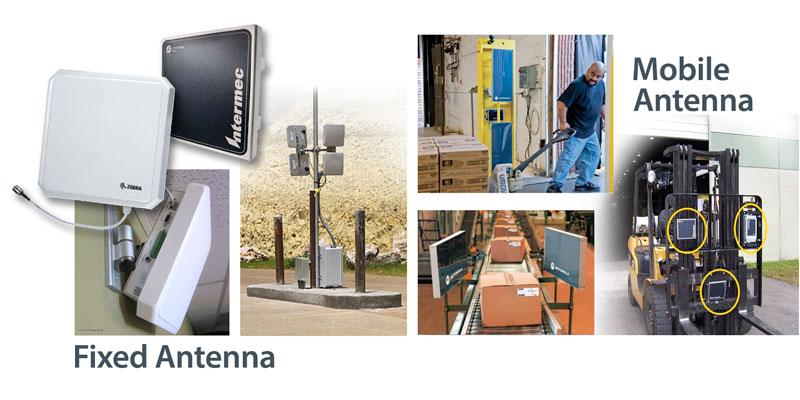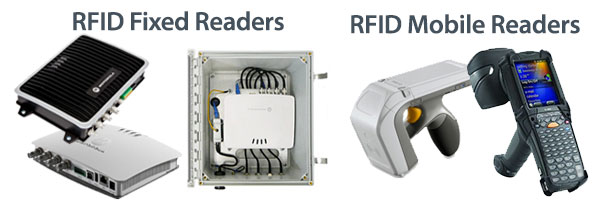RFID Information Guide
Radio frequency identification, or RFID, uses radio waves to automatically identify objects. Item data is stored on a microchip attached to an antenna (called an RFID transponder or RFID tag). This chip or inlay is then placed within the adhesive of a synthetic label or hard plastic/metal tag. The tag transmits the data, either actively or passively, to a reader when the reader passes within range, The reader then converts the signal to digital information that can be used by a computer for further processing.
Tracking your assets, inventory, containers, packages or any other valuable item can be accomplished easily using RFID tags.

- Work In Progress
- Inventory Tracking, Receiving & Fulfillment
- Asset Tracking for Offices, Hospitals, Manufacturers and Retail
- Vital file and record keeping / tracking
- Government compliance within multiple industries
- Check-In/Check-Out Services

Antennas are used to establish communication points. The majority of RFID applications require several Antennas to help direct the signal throughout the building or area and towards the RFID Reader. The placement of these antennae is absolutely critical and different for every installation. Certain applications require a choke point through which tagged products must pass to complete the process. Site surveys are essential to creating a working RFID system.

There are 2 basic styles of readers, fixed and mobile. Each has capabilities that are designed to suit differing application requirements. In general terms, a reader comprises a microprocessor-controlled RF transmitter and receiver. The reader is controlled through an interface, typically a communication port, the characteristics of which will vary according to application. The different types of interfaces include: RS232, USB, Ethernet, and Power Over Ethernet (POE). The amount of memory a reader will contain for data and event logging, and complexity also varies substantially.

Fixed RFID Readers are hard-wired to their respective Antennas, typically 4 or 8-port. These readers transmit signals via Ethernet, RS232, USB, and Ethernet to the server or destination computer. Their form factor can be rugged, vehicle mount, or fixed at the read or choke point. Wi-Fi models are also available. Once adjusted, their stability provides consistent and reliable service.
Mobile RFID Readers are mobile computers equipped with RFID reader and antenna to capture the data on the RFID tags. Once captured, the data is either store for later transmission or can be read on the device with the proper transfer utility installed. Integration and communication with other computers can be through Wi-Fi or other standard connections.
Employing the proper Software to run your RFID systems is the most critical part of the RFID
process. The initial site-survey will determine what type of Transfer Utility
(Middleware) is needed to integrate with your current ERP software. Whether you use Cisco,
Oracle or Cloud based software the proper RFID software will allow a variety of services
including:
Gather inventory data, provide lookup and locate functionality and enable data management via mobile device.
Data collection provides real-time decision support information for compliance, validation, tracking and inventory accuracy.
Aggregate, filter and process RFID data per customer-defined business rules. Benefit from custom reporting and deliver actionable information.
APIs and interfaces enable advanced customization and integration to support customer existing system integration requirement, functionality and enable data management via mobile device.
For more information or to discuss your project, Contact Us or call 888-237-8525.


